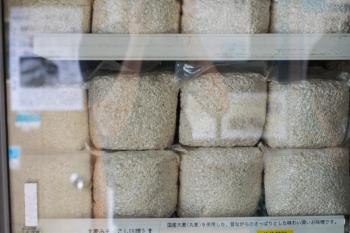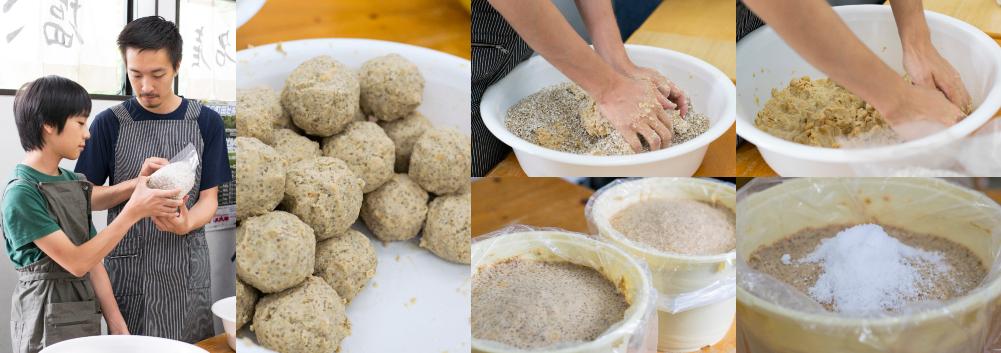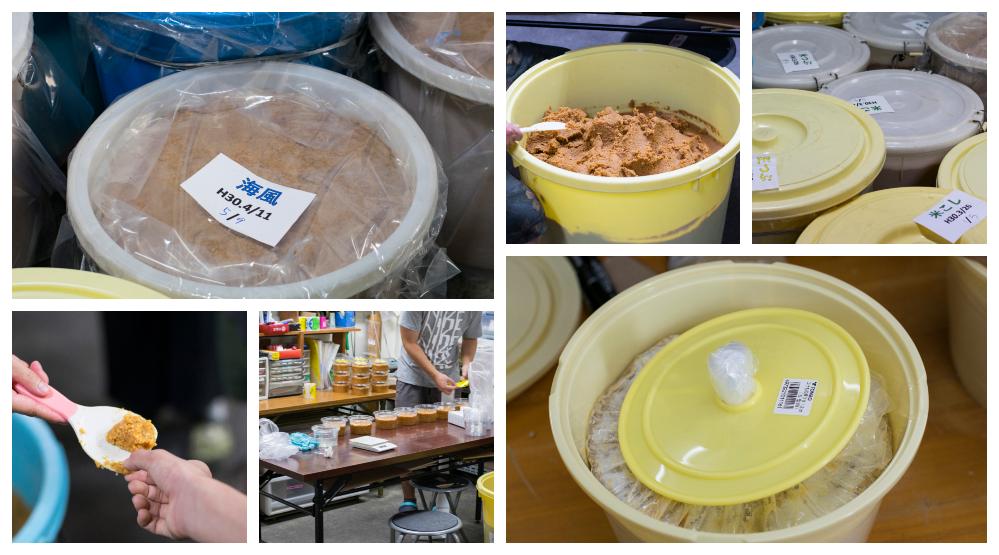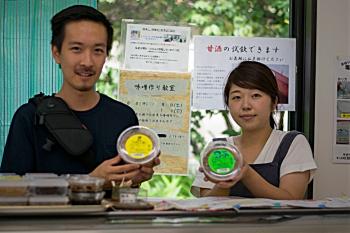Table of contents:
The fermented paste is used in many Japanese dishes. You can find it in soups, sauces or as a dip. Miso is especially versatile in soups. For example, there is Miso Shiro or the well-known noodle soup Ramen. Miso-Ramen broth is made from the soybean paste. But there are also many other types of ramen that use miso. The paste is also suitable as a dip. Miso has a high salt content for preservation. Therefore, only a small amount of the salty paste is usually used when cooking Miso Shiro, or miso soup.
The variations of Miso Paste

Miso is divided into different categories depending on the ingredients, color and taste. Soybeans are always the basis. With Mamemiso (=bean miso豆味噌), this ingredient is used exclusively. With (=rice miso米味噌) rice is added and with Mugimiso (=grain/barley miso麦味噌) barley is added. There are also differences in color. This depends mainly on the fermentation time. You can store miso for several years and even decades. The only important thing is that the paste is airtight. However, one thing to keep in mind about the storage duration is that the intensity of the taste increases over the years.
At the very beginning, the paste is white and is also called Shiro-Miso (白味噌). You can still taste the soybeans, so it is rather neutral. The red miso is called Aka-Miso (赤味噌) and is in the middle of fermentation. The black Kuro-Miso paste (黒味噌) has the longest fermentation time. So it can be said that Kuro-Miso paste tastes the most intense of all three varieties. There are other flavors, namely spicy (Kara-Miso 辛味噌), sweet (Ama-Miso 甘味噌) and a mixture of different (Awase-Miso 合わせ味噌)
How healthy is Miso?
Basically, miso, like all fermented foods, is very healthy. The paste contains vitamins and nutrients such as: proteins, vitamin B2, vitamin E, various enzymes, isoflavones, choline and lecithin. However, this only applies to fresh miso. Since the taste constantly changes, the fresh variant is not suitable for sale in supermarkets. To prevent this, miso is usually pasteurized. After that, the miso paste no longer ferments and retains the same taste. Pasteurization heats the product so strongly that many nutrients are lost. Therefore, you should opt for the fresh variant. If you can get it, it's not exactly cheap. It also has a short shelf life. You have to use it up quickly, otherwise there is a risk of mold after opening. Or you want to intentionally make the taste a bit more intense.
A Course - Making your own Miso

Cooking classes are very common in Japan. They are even offered as a nice alternative to the school day for school classes. It is worth doing a miso course. Because the production of the popular paste is unknown to most people. The course is affordable at around 25 euros and you don't need to bring anything with you, as all the ingredients and cooking utensils are provided.
But you need to know one thing in advance. The course is hard work and you can't taste the results of the cooking right away. You can only use your own miso paste after half a year or a whole year.
But now to the course. Soybeans are processed into a paste by hand. You then shape this into a small ball and layer it in a bucket. Koji is added. These are molds that enable fermentation. Their work is only interrupted when consumed or pasteurized. Then salt is added. It is an important ingredient for taste and shelf life. Finally, the bucket is closed.

Now you have to be patient. Because you have to wait at least six months before you can try your miso paste. Until then it is stored in an underground storage pit, where it is always cool.
After the course, there is a short tour of the miso factory. Miso is produced here for sale. You can see the pastes in different stages of ripening. If you want, you can buy different miso products. These are more intense and aromatic in taste than the supermarket goods.

My Opinion of the Course:

If you are interested in Japanese cuisine and have the opportunity to take such a miso course, then you should take part once. I would never have thought that so much work goes into such an ordinary product as miso. The most fun was learning about the different types and their classification. And the most important thing for us was to learn how to handle miso when cooking so that it tastes really good.


Comments
Schöner Artikel. Ich mache mein Miso selber, weil ich hier in der Nähe kein ordentliches bekomme. Das ist nochmal eine ganz eigene Erfahrung, wo man das Produkt und seine Vielfältigkeit erst wirklich kennenlernt. Würde ich jedem der auf japanische Küche und geile Aromen steht empfehlen.
Bin bei der Miso Google Suche auf euren Blog gestoßen - sehr inspirierend :-) Habe soeben euer Korea Buch bestellt, bin gespannt!
Sehr ausführlicher Artikel. Aber was passiert mit den Milchsäurebakterien in Miso, wenn es z. B. in einer Suppe mitgekocht wird? Ich bin ja an den Milchsäurebakterien interessiert, nur wenn diese bei Erhitzung zerstört werden, ist ein Versprechen von Miso nicht mehr gegeben.